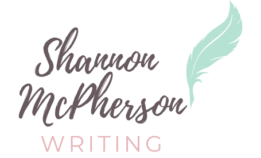I don’t know about you, but I love a good villain. You know that moment when you start feeling SYMPATHY for the villain? That’s when you know you’re encountering a well-crafted character. Just because someone is evil, it doesn’t mean they have to be one dimensional.
More often than not, villains have a terrible backstory, although sometimes people are evil just to be evil. Not everyone (fictional or real) that has suffered in their childhood goes on to do awful things, and I don’t think that should be used as an excuse for their actions. I recently finished the first season of the TV show You (haven’t read the book), and there were a few moments where I felt like I understood why Joe Goldberg was doing what he was doing and I had to mentally slap myself. However, that made me realize what an excellent character he was, even though he is awful.
In Joanna Penn’s blog post 5 Tips for Writing Superbad Villains, she says that “the villain is the hero of their own story, and their reasons for destroying the world (in my books) needs to be convincing.” Without your villain, your hero would have nothing to do. Your villain creates the conflict that your hero must overcome and oftentimes cause them to have some intense revelations about themselves. Penn argues that your villain is the most important character in your novel, not your hero. Your villain must be as well thought out, if not more, than your main protagonist.
In order to help you think more in depth about your villains, I’ve come up with a few questions that you should ask yourself when doing character sketches and writing your novel.
1. What is their ‘why?’: Developing a well thought out backstory for your villain is essential. Villains usually suffer cruelly growing up, or even just in their adult lives, but there is something that makes them snap. This makes me think of Marcella Riggins in VE Schwab’s Vengeful. I don’t want to give away any spoilers, but there was an inciting incident that happened to her that turned the tide on her future actions.
2. Does their ‘why’ line up with their motive and end goal?: After you figure out why your villain is on an “evil” path, you need to work out what is it that they want and what is their reasoning behind it. Going back to Penn’s article, she says “Why + Motive = Villain Action.” Once you figure out those things, it helps put your story in motion.
3. What brings them into conflict with your hero?: Harry Potter comes in contact with Lord Voldemort because of a prophecy that was written saying that a young boy would be the downfall of Voldemort, which is why he went to Harry’s house to kill him. Bring your villain and hero together in a logical way that ties their two destinies together.
If you consider the above items when developing your villain, it will make for a more well thought out character that is fully rounded, instead of a flat antagonist that doesn’t have any layers. Your villain is just as important as your main character, so give them as much time and effort as you do to your protagonists.

